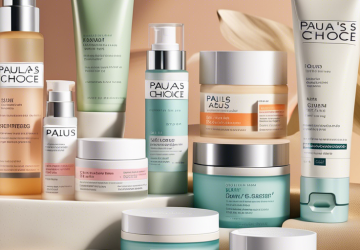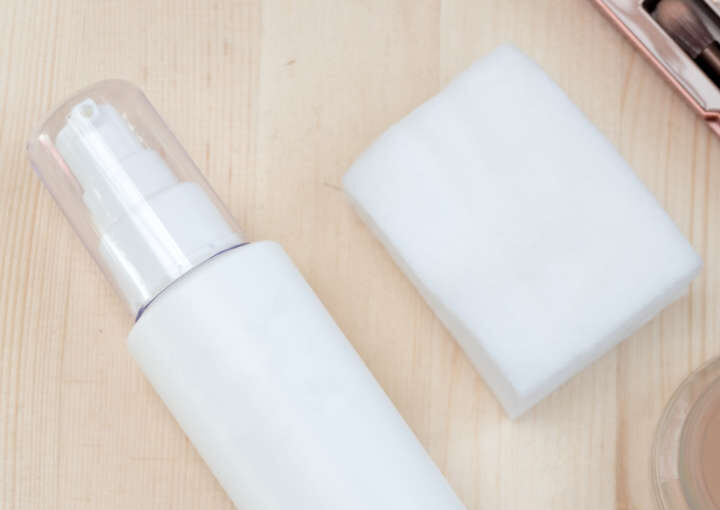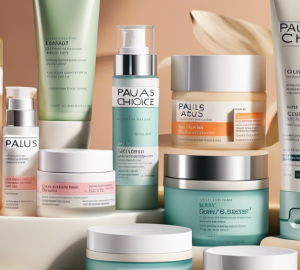[ad_1]
The key to a long-lasting makeup look lies not just in your high-end makeup products. So, what helps your makeup stay in place for a long time? Setting products like setting spray and powder. But what is the debate about setting spray vs. setting powder? Are they the same? No, these products are used for different purposes. This article explores everything about setting sprays and powders, their differences, how to choose the best one for your skin type, and how to use them for extending your makeup. Scroll down for more information.
What Is A Setting Powder?
Here are some insights into setting powder:
- It is available in two forms — loose and pressed — and requires a brush or puff to be applied.
- Loose powder is finer and made of ingredients, such as talc and silica, which offer lightweight coverage and absorb excess oil. It is, thus, ideal for people who have oily and combination skin types or wear liquid foundation.
- Pressed powder is semi-solid and easier to use.
- Setting powder holds the foundation in place and prevents it from rubbing off.
- It reduces shine for a long-lasting or semi-matte look.
- It can be translucent or barely shiny to keep the natural skin texture or slightly tinted to sit well with your skin tone.
- Setting powder also creates a smooth canvas for a flawless and hassle-free application of other products.
All in all, if you want a matte, airbrushed finish, setting powder should be your go-to product. It is better suited for normal and oily skin or if you have issues of creasing/cracking.
Pro Tips
- Go for a setting powder that contains ingredients, such as cornstarch, silica, and mica, as these are especially good for oily skin.
- A setting powder differs from a finishing powder, which is typically used after setting powder to cover up lines under the eyes and pores and control shine.
- Remember, if you are wearing foundation or applying multiple spots of concealer, setting powder should be preferred over setting spray.
Stylecraze Trivia
In olden times, women used harmful ingredients like harsh bleaches, lead, and lye as setting powder to look fair.
When should you use a setting spray and what exactly is it?
What Is Setting Spray?
Setting spray is a fine mist spray that helps set your full makeup in one go, as opposed to setting powder, which works on specific areas. Here’s a peek into setting sprays:
- Setting spray can be applied all over the skin and not just the face after the makeup routine is complete.
- It can be applied as a prep and then on top of the finished makeup all over the face and decollete area.
- It lends a lightweight, skin-like finish and doesn’t seep into skin pores like a powder might.
- Setting spray can offer both dewy and matte finish, depending on the product you choose.
- It can also be used to accentuate the highlighter or apply a damp eyeshadow.
Pro Tips
- Use humectant mists for dry skin, as they can seal in the moisture, offering a softer, less-textured look.
- On the other hand, illuminating mists contain micro-fine light-reflective particles that can make your face glow and look more radiant.
- For oily skin, go for a setting spray that has ingredients like aloe vera, witch hazel, and rose water to tackle excess oil. You can also go for mattifying mists that lend a softer look, minus the extra shine.
Stylecraze Trivia
Cosmetic company Skindinavia released the first setting spray to the market in 2007.
While setting powder is better suited for oily skin as it affords an airbrushed look, you can choose the kind of setting spray that works best with your skin type. Whether you want a dewy look or a matte finish can also determine your choice of setting product.
But whatever you choose, applying it the right way is also important. So, let’s look at how you can use a setting powder properly.
How To Use Setting Powder
Setting powder can be applied sparingly or all over the face. Here’s a step-by-step guide on its application:
- Once you are done applying the foundation, concealer, blush, or any other face makeup product, you are ready to use the setting powder.
- Go for a soft and fluffy brush with a tapered end or a small makeup puff. This will ensure even and targeted application.
- Swirl your brush into the powder and tap over the powder container to remove the excess product. Apply in gentle tapping motions, especially on the sides of the nose, under the eyes, and on your T zone, as these areas experience excess oil buildup.
- Make sure to press and roll instead of aggressively blending or rubbing. Follow the upside-down ’V’ shape, focusing on the sides of the nose, mouth, chin, and forehead.
- If you wish to apply it all over your face, go for a flat powder brush.
- Lightly dust on a finishing powder if required.
Well, that wasn’t one bit tough! Now, let’s get ourselves acquainted with the application of setting spray.
How To Use Setting Spray
Here’s how you can use a setting spray for that perfect long-lasting finish:
- Finish applying all the makeup, from lipstick and eyeliner to foundation and concealer.
- Shake the spray well. Place the spray about 8 inches away from your face. You want to aim for gentle misting and not dousing when using a setting spray.
- Close your eyes and spritz on the center of your face as well as your forehead.
- Spray along the sides of your face, chin, and neck.
- Let it dry and voila! You are done!
Now that you have understood how to use both the setting products, take your makeup game a notch higher and know how you can use the two together.
Coupling Setting Spray And Powder
You can use a setting spray after applying loose setting powder to prolong the life of your makeup. There are no hard and fast rules; you just need to understand your skin type and requirements before zeroing down on a setting product.
Also, the benefits of a setting spray aren’t limited to keeping your makeup in place. Read the next section to know what more it has to offer.
Using A Setting Spray Without Makeup
If you choose to not wear any makeup, you can still use a setting spray to add an extra layer of hydration, especially if you have dry skin.
That said, setting sprays should not be used every day as most of them contain alcohol. Use them sparingly if you aren’t wearing any makeup and go for alcohol-free formulas.
Key Takeaways
- Setting products, like powders and sprays, keep your makeup in place and ensure you look fresh for long hours. However, setting sprays and setting powders are different products.
- Setting powders have a matte finish. A setting spray offers you both dewy and matte finishes.
- While you have to spritz the spray on your makeup, you have to apply the powder with a brush.
It is important to know the difference between setting spray and setting powder to determine which product is suitable for your skin type. Setting powder can absorb excess oil, so it is considered ideal for oily or combination skin. On the other hand, setting spray is best suited for dry skin due to its ability to hydrate the skin. While setting spray can be used anywhere on the face, setting powder is meant for use only on the oily areas on the face that unsettle makeup. So, pick the right product based on your skin type and enjoy great results.
In a nutshell, as is with all beauty products, make sure to consult a makeup specialist to understand the right kind of product for you and your skin type.
Frequently Asked Questions
Do you put setting spray on before or after makeup?
Setting spray can be applied before and after the makeup. It helps to set all the makeup and make it last longer.
Should you use setting spray before the foundation?
The setting spray could be applied as “a base” if you feel the need to have an extra fix between skincare and makeup products.
Related
[ad_2]









